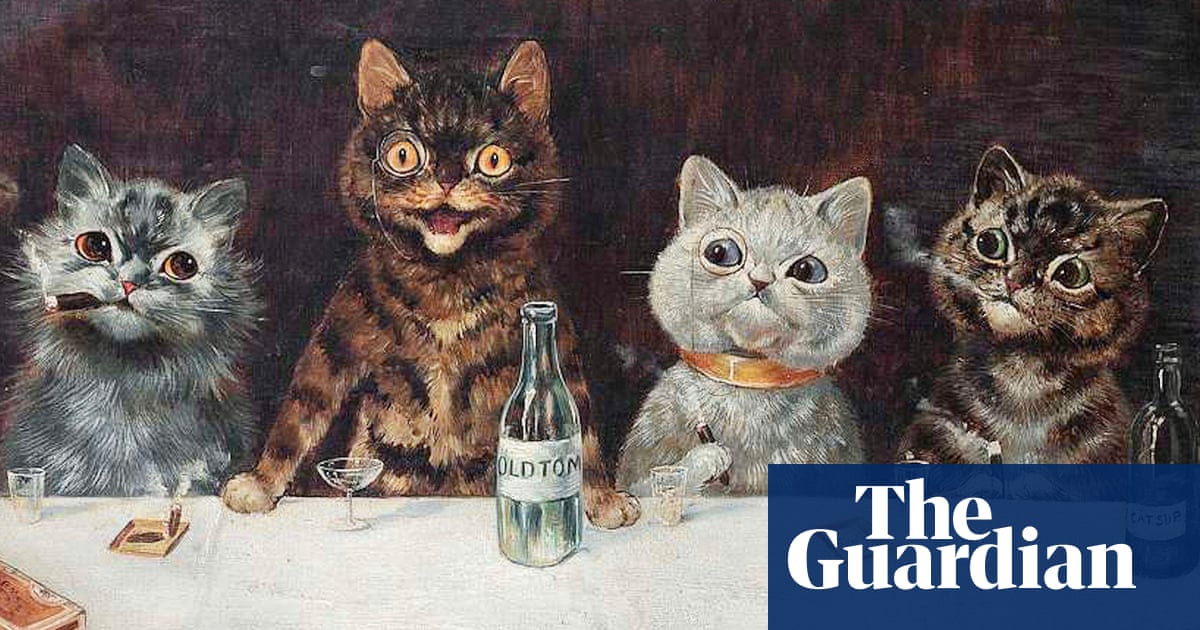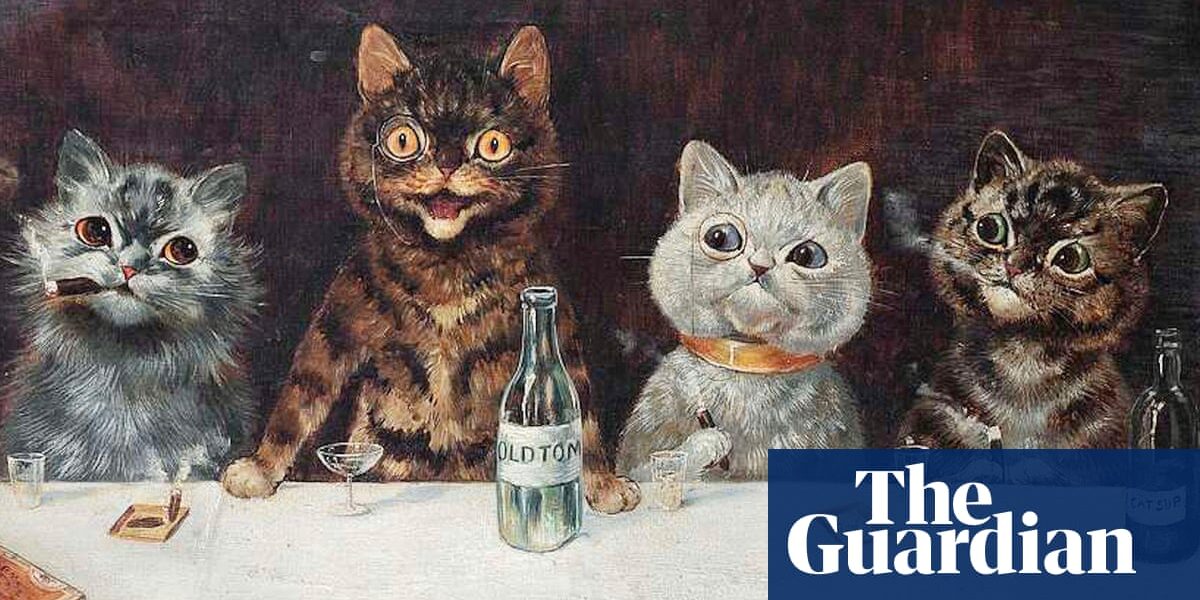
‘Catland”, as Kathryn Hughes describes it, is two things. One is the imaginary universe of Louis Wain’s illustrations – in which cats walk on their hind legs and wear clothes, and humans do not feature. In the late Victorian and Edwardian eras, these kitschy pictures were everywhere and he was world famous. He’s all but forgotten now, though his influence lives on. And one of the ways it does, Hughes argues, is in the other “Catland”, the one we all live in. Wain’s career accompanied a transformation in attitudes between 1870 and 1939 in which cats went from being necessary evils or outright pests to fixtures of home and hearth.
For much of human history, cats were nameless creatures who lived on scraps, caught mice and unsightly diseases, yowled in streets, were familiars of witches and had fireworks stuffed up their bums by cruel children. Now, flesh-and-blood cats are beloved family pets, selectively bred, and accustomed to lives of expensive idleness, while fictional cats are cute rather than vicious, cuddly rather than satanic. The small part of the internet that isn’t pornography, it’s sometimes observed, is mostly cat pictures.
In 50 chapters, Hughes tours these two Catlands using Wain’s life story – “which runs, or rather zigzags, through this book” – to stitch it all together. We meet the first “cat-burglar” (a rooftop-crawling felon of feline agility); learn of the class-ridden civil war between different factions in the Victorian “cat fancy”; attend a slap-up meal thrown by well-wishers for London’s cats’ meat men (a thousand of these vendors roamed London’s streets at the turn of the century, selling offal scraps to pet owners and advertising their wares with a cry of: “Ca-Doe-MEE!”); learn when “pussy” became a double entendre; decode the racialised suspicion of Siamese cats that gave Disney’s Lady and the Tramp its sinister and shaming musical number; encounter cats in the trenches of the first world war; and learn the dismaying reality of what the Feline Defence League actually did in “defence” of cats, which was round them up and gas them.
This is a darting, hobby-horsical, hugely interesting book with the feel of a passion project rather than a sobersides work of history. But its ease and authority come from how Hughes as a historian is completely at home in the era under discussion, offering feline sideways glances at class, economics, urbanisation, eugenics, gender politics and much else besides. She has a lovely, deft, offhand sharpness of phrase, too. In her chapter on the cat-loving Princess Victoria of Schleswig-Holstein (Queen Vic’s favourite grandchild), for instance, she remarks: “You couldn’t miss the family resemblance: the young woman had that same boneless face and oyster eyes you saw on so many of her first cousins, now scattered through the palaces of Europe.”
Is it eccentric that she pegs her story to Wain’s work, most of which seems about as consequential as that picture (not by him) of dogs playing poker? Whatever his other virtues and shortcomings, he was a true hack. He boasted of being able to draw a cat in 45 seconds, and would sometimes draw one with each hand simultaneously to show off. That his Catland is wildly inconsistent in tone – sometimes smutty, sometimes innocent to the point of tweeness, as if he couldn’t decide whether to be Beatrix Potter or Donald McGill – is in large part because he went where the money seemed to be. (Which makes it more poignant that despite becoming world famous he never seemed to have any.) His cats advertised leather goods shops, tea, soap and Belgian biscuits. When postcards were the thing, the shape of Wain’s cats changed to fit their dimensions, ushering in “a squat, angular, almost cuboid shape”. Impressed by futurism, Wain produced brightly coloured ceramic cats in an angular, near-abstract style. Everyone mocked these at the time, but Hughes adores them and you can see why. Had this commercial artist made the jump to fine art – bounced by the zeitgeist “from a past-his-prime novelty cartoonist into an artist of startling originality”? No, he was soon back under commission to illustrate The Tale of Little Priscilla Purr and Peter Pusskin for the burgeoning post-Beatrix Potter “kiddy” market.
Even though Hughes argues that his work helped midwife the age of the cat, Wain seemed always to be a bit behind the curve. He had a brief, not altogether successful stint in the US when Hearst, on a shopping spree for cartoonists, contracted him to produce syndicated strips (he struggled to get the hang of them). Three years after Wain returned to Britain, Hughes notes in an aside, Hearst signed up that stone-cold genius George Herriman to draw Krazy Kat. Likewise, Wain tried and failed to get off the ground making animated films for the cinema … less than two years before Felix the Cat “would storm in and carry all before him”.
By that stage, though, Wain had more to worry about. He had always been cranky in a slightly tedious, rambling-letters-to-the-papers way, but by the early 1920s he slid into mental illness. He seldom left his bedroom and seldom slept. He surrounded himself with bits of scrap metal to deflect electric rays, believed that the projector at the local picture house was sucking his spinster sisters’ brains out, and was duly carted off to the local asylum.
A visitor to his ward, as a famous story has it, came across “a quiet little man drawing cats” and exclaimed: “‘Good Lord, man, you draw just like Louis Wain!’ To which the man replied: ‘I am Louis Wain.’ ‘You’re not, you know!’ said his interlocutor cheerily. ‘But I am,’ said the artist, and he was.”
after newsletter promotion
Source: theguardian.com




